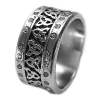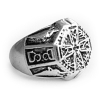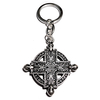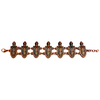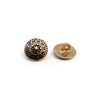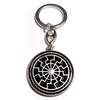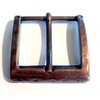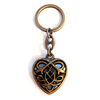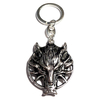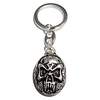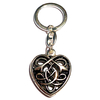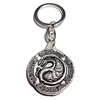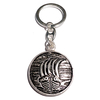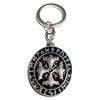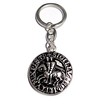CATEGORIES KEYCHAINS 925 STERLING SILVER Keychain FLEUR DE LIS 925
CATEGORIES KEYCHAINS 925 STERLING SILVER Keychain GERMANENWAPPEN 925
CATEGORIES KEYCHAINS 925 STERLING SILVER Keychain IRMINSUL 925
CATEGORIES KEYCHAINS 925 STERLING SILVER Keychain KELTENKREUZ VON AHENNY 925
CATEGORIES KEYCHAINS 925 STERLING SILVER Keychain MEDUSA 925
CATEGORIES KEYCHAINS 925 STERLING SILVER Keychain MEROWINGER AMULETT 925
CATEGORIES KEYCHAINS 925 STERLING SILVER Keychain NAGLFAR 925
CATEGORIES KEYCHAINS 925 STERLING SILVER Keychain NORDIC SKULL 925
CATEGORIES KEYCHAINS 925 STERLING SILVER Keychain NORDISCHER DRACHE 925
CATEGORIES KEYCHAINS 925 STERLING SILVER Keychain NORDISCHES AXTKREUZ 925
CATEGORIES KEYCHAINS 925 STERLING SILVER Keychain ORDO DE TEMPLO 925
CATEGORIES KEYCHAINS 925 STERLING SILVER Keychain PIRATES OF THE CARIBBEAN 925
Keychain FLEUR DE LIS 925
In stock
can be shipped within 1 days
Customers who bought this product also bought
|
|
|
|
|
|
|
|
Browse this category: 925 STERLING SILVER
Keychain GERMANENWAPPEN 925
In stock
can be shipped within 1 days
Customers who bought this product also bought
|
|
|
|
|
|
|
|
Browse this category: 925 STERLING SILVER
Keychain IRMINSUL 925
In stock
can be shipped within 1 days
Customers who bought this product also bought
|
|
|
|
|
|
|
|
Browse this category: 925 STERLING SILVER
Keychain KELTENKREUZ VON AHENNY 925
In stock
can be shipped within 1 days
Customers who bought this product also bought
|
|
|
|
|
|
|
|
Browse this category: 925 STERLING SILVER
Keychain MEDUSA 925
In stock
can be shipped within 1 days
Customers who bought this product also bought
|
|
|
|
|
|
|
|
Browse this category: 925 STERLING SILVER
Keychain MEROWINGER AMULETT 925
In stock
can be shipped within 1 days
Customers who bought this product also bought
|
|
|
|
|
|
|
|
Browse this category: 925 STERLING SILVER
Keychain NAGLFAR 925
In stock
can be shipped within 1 days
Customers who bought this product also bought
|
|
|
|
|
|
|
|
Browse this category: 925 STERLING SILVER
Keychain NORDIC SKULL 925
In stock
can be shipped within 1 days
Customers who bought this product also bought
|
|
|
|
|
|
|
|
Browse this category: 925 STERLING SILVER
Keychain NORDISCHER DRACHE 925
In stock
can be shipped within 1 days
Customers who bought this product also bought
|
|
|
|
|
|
|
|
Browse this category: 925 STERLING SILVER
Keychain NORDISCHES AXTKREUZ 925
In stock
can be shipped within 1 days
Customers who bought this product also bought
|
|
|
|
|
|
|
|
Browse this category: 925 STERLING SILVER
Keychain ORDO DE TEMPLO 925
In stock
can be shipped within 1 days
Customers who bought this product also bought
|
|
|
|
|
|
|
|
Browse this category: 925 STERLING SILVER
Keychain PIRATES OF THE CARIBBEAN 925
In stock
can be shipped within 1 days
Customers who bought this product also bought
|
|
|
|
|
|
|
|
Browse this category: 925 STERLING SILVER






